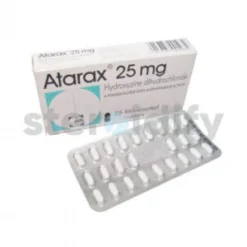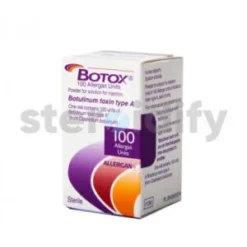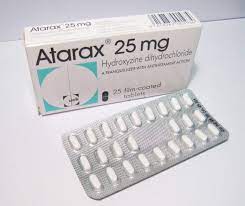DERMOVATE HAIR LOTION
30.00$ Original price was: 30.00$.28.00$Current price is: 28.00$.
DERMOVATE HAIR LOTION – GSK
What is Dermovate used for?
Dermovate cream and ointment are used in short courses to treat severe forms of inflammatory skin disorders, such as those below, when weaker corticosteroids have not been effective.
- Eczema.
- Psoriasis.
- Skin disorder called lichen planus, in which there are patches on the skin that appear as flat-topped, shiny, almost violet itchy areas.
- Skin disorder called discoid lupus erythematosus, which is caused by the immune system attacking the skin.
How does Dermovate work?
Dermovate cream and ointment both contain the active ingredient clobetasol propionate 0.05%, which is a type of medicine called a topical corticosteroid. Clobetasol is a very potent corticosteroid used to reduce inflammation in the skin.
Skin inflammation happens when an allergic reaction or irritation of the skin causes various substances to be released in the skin that make blood vessels widen and result in the irritated area becoming red, swollen, itchy and painful.
Clobetasol acts inside the skin cells to stop the release of these inflammatory substances. This reduces the swelling, redness and itching and so helps prevent scratching that can further irritate the skin.
Dermovate cream is more suitable for moist, weeping areas of skin, while the thicker, more greasy ointment is more suitable for dry, scaly areas of skin.
Who should not use Dermovate?
Dermovate cream and ointment are not licensed for children under one year of age.
Don’t apply the cream or ointment to broken skin or open wounds, or areas of skin affected by any of the following conditions:
- Viral skin infections, such as chickenpox, shingles, cold sores or herpes simplex.
- Bacterial skin infections, such as impetigo.
- Fungal skin infections, such as thrush, ringworm, athlete’s foot.
- Acne.
- Acne rosacea.
- Inflammatory rash around the mouth (perioral dermatitis).
- Itchy skin where there is no inflammation.
- Widespread plaque psoriasis.
- Nappy rash.
Don’t use the cream or ointment if you’re allergic to any of its ingredients. Check the ingredients listed in the leaflet that comes with the medicine if you know you have specific allergies.
Never use Dermovate cream or ointment as a moisturiser.
Can I use Dermovate while pregnant or breastfeeding?
Only if your doctor thinks it’s essential.
If your specialist says you can use Dermovate while pregnant or breastfeeding you should not use it on large areas of skin, underneath airtight dressings, or for prolonged periods of time. This will minimise any absorption of the medicine. If you need to apply the cream or ointment to your breasts don’t do this shortly before giving a feed. Ask your doctor or pharmacist for further information.
How do I use Dermovate?
Dermovate cream or ointment should be applied thinly to the affected areas of skin once or twice a day to start with. As soon as the condition starts to improve, you should use it less frequently, as directed by your doctor. See below for how much to use.
Don’t apply the cream or ointment to broken or infected areas of skin, unless the infection is also being treated. Don’t apply it to the face unless instructed to by your specialist.
Take care to avoid getting the cream or ointment in your eyes, mouth or nose. Rinse with cold water if accidental contact occurs.
Wash your hands thoroughly after applying the cream or ointment, unless the hands are the area being treated.
Don’t cover the area being treated with airtight dressings such as bandages or other dressings unless directed by a doctor, as these increase the absorption of the medicine into the body and so increase the risk of side effects. If your doctor has advised you to use dressings with Dermovate, you should cleanse the skin before applying the cream or ointment under a fresh dressing.
Continue using Dermovate for as long as your doctor has recommended. Always follow the instructions given by your doctor. If your skin condition has not improved after two weeks of treatment you should consult your doctor.
If a specialist has prescribed Dermovate to treat a child or skin on the face, wherever possible it should not be used for longer than five days at a time. You should not use airtight dressings to cover the area treated. Be aware that children’s nappies can also act as an airtight dressing and can increase the absorption of the medicine. Children being treated with Dermovate should be reviewed by their specialist at least once a week.
Don’t use Dermovate more often or for longer than advised by your doctor.
If you think the area of skin you are treating has become infected you should stop using Dermovate and consult your doctor.
What are the possible side effects of Dermovate?
Medicines and their possible side effects can affect individual people in different ways. Very potent topical corticosteroids like Dermovate have more potential to cause side effects than milder steroids. However, when applied sparingly, no more more than twice a day, as directed by your doctor, side effects are still rare.
Side effects are more likely if you use Dermovate on extensive areas of skin, broken or raw skin, delicate areas of skin like the face, areas of skin that rub together like armpits or skin folds, or if you use it underneath airtight dressings or for long periods of time.
The following side effects are known to be associated with topical corticosteroids. Just because a side effect is stated here doesn’t mean that all people using Dermovate will experience that or any side effect.
- Skin irritation at site of application. If you experience any signs of allergic reactions, such as increased itching, redness or burning of the skin after applying the cream or ointment, you should stop using it and consult your doctor.
- Thinning of the skin.
- Reduced skin pigmentation.
- Stretch marks.
- Groupings of fine blood vessels becoming prominent under the skin (telangiectasia).
- Excessive hair growth (hypertrichosis).
- Acne.
- Spread or worsening of untreated infections.
- On rare occasions enough corticosteroid may be absorbed to have side effects on other parts of the body, for example a decrease in the production of natural hormones by the adrenal glands or Cushing’s syndrome. You can read more about the possible side effects of topical corticosteroids here.
Can I use Dermovate with other medicines?
Make sure your doctor or pharmacist know if you’re already using any other medicines, particularly if you’re already using any other corticosteroid medicines (including those bought without a prescription) before you start using Dermovate.
If you need to use other topical medicines on the same area of skin it’s recommended that you leave several minutes between applying each product. This is to allow each product time to be absorbed and avoid them mixing on the skin.
If you also use a moisturiser it’s best to apply it about 30 minutes before applying Dermovate. This will help soften the skin and improve the absorption of the corticosteroid. If you apply a moisturiser just before or after applying Dermovate this can dilute the corticosteroid and potentially make it less effective.
Be the first to review “DERMOVATE HAIR LOTION” Cancel reply
Related products
Skin Health
Skin Health
Skin Health













Reviews
There are no reviews yet.